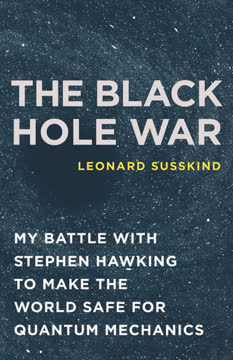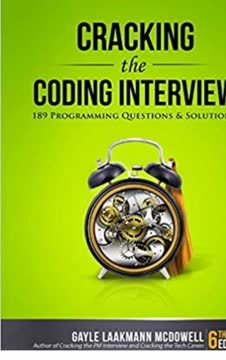Key Takeaways
1. NASA's overconfidence led to underestimating shuttle failure risks
The estimates range from roughly 1 in 100 to 1 in 100,000. The higher figures come from working engineers, and the very low figures come from management.
Dangerous optimism. NASA management's estimates of shuttle failure probability were wildly optimistic compared to those of working engineers. This overconfidence led to a dangerous disconnect between perceived and actual risk. The management's estimate of 1 in 100,000 implied that one could launch a shuttle every day for 300 years expecting to lose only one, a claim that defied both logic and historical data.
Ignoring reality. NASA's range safety officer, using data from nearly 2,900 previous rocket flights, estimated a more realistic failure rate of 1 in 25 to 1 in 50 for mature rockets. Even with special care in selecting parts and inspection, achieving a failure rate below 1 in 100 was considered unlikely with the technology available at the time. This stark contrast between management's fantasy and engineering reality created a perilous environment where risks were systematically underestimated and warning signs ignored.
2. O-ring problems were known but ignored due to previous "successes"
When playing Russian roulette, the fact that the first shot got off safely is of little comfort for the next.
False sense of security. NASA repeatedly accepted O-ring erosion and blow-by in previous flights as evidence of safety, rather than recognizing them as warnings of a potentially catastrophic problem. This mindset was akin to playing Russian roulette, where past successes do not guarantee future safety.
Misunderstanding risk. The organization misused the concept of "safety factor," applying it to unexpected erosion rather than recognizing it as a sign of design failure. NASA's management fooled themselves into thinking they understood the O-ring problem, using flawed mathematical models and empirical curve fitting instead of addressing the fundamental issue. This false confidence led to:
- Acceptance of increasing levels of damage
- Failure to thoroughly investigate the root cause
- Overlooking the potential for more severe erosion in future flights
3. Management's disconnect from engineers created dangerous blind spots
It appears that there are enormous differences of opinion as to the probability of a failure with loss of vehicle and of human life.
Conflicting perspectives. A significant divide existed between NASA management and engineers regarding the shuttle's safety. This disconnect created dangerous blind spots in decision-making processes.
Key issues:
- Management relied on "engineering judgment" rather than statistical analysis
- Engineers' concerns were often downplayed or ignored
- Historical data and warning signs were misinterpreted or dismissed
Consequences of disconnect:
- Critical safety issues were overlooked
- Unrealistic expectations were set for shuttle performance
- A culture of complacency developed around known problems
4. Feynman's hands-on approach revealed critical flaws in NASA's processes
I'm always feeling uncomfortable that I don't remember names and then I feel bad that I don't pay enough attention to people.
Unconventional methods. Feynman's unique investigative style, characterized by direct communication with engineers and hands-on experiments, uncovered critical issues that formal processes missed. His approach included:
- Talking directly to engineers rather than relying on management briefings
- Conducting simple but revealing experiments, like the O-ring ice water demonstration
- Asking seemingly naive questions to expose inconsistencies and gaps in knowledge
Revealing the truth. Feynman's methods exposed:
- The O-ring's vulnerability to cold temperatures
- Discrepancies between management claims and engineering realities
- The extent of known problems that were being downplayed or ignored
His willingness to challenge authority and think independently was crucial in uncovering the true causes of the Challenger disaster.
5. NASA's culture discouraged open communication about problems
From the point of view of the press and some of the commissioners, Mr. Cook's story sounded like a big exposé, as if NASA was hiding the seals problem from us.
Suppressed concerns. NASA's organizational culture had evolved to discourage the open discussion of problems. This environment led to:
- Engineers feeling unable to voice concerns effectively
- Important safety issues being downplayed or hidden
- A false sense of security at higher management levels
Root causes:
- Pressure to maintain NASA's image and secure funding
- Fear of project delays or cancellations
- A hierarchical structure that impeded information flow
The result was a dangerous situation where critical safety issues were known at lower levels but not effectively communicated or addressed at the decision-making level.
6. Shuttle main engines faced ongoing reliability issues
In a total of 250,000 seconds of operation, the main engines have failed seriously perhaps 16 times.
Persistent problems. The space shuttle main engines, despite their impressive design, faced numerous ongoing reliability issues. These problems included:
- Turbine blade cracks
- Bearing failures
- Coolant liner failures
- Vibration issues
Challenging solutions. The top-down design approach of the engines made identifying and fixing problems more difficult and expensive. This led to:
- Frequent maintenance and part replacements
- Engines operating well below their original design specifications
- Ongoing uncertainty about long-term reliability
Despite efforts to address these issues, the complex nature of the engines and the difficulty in fully understanding all failure modes meant that significant risks remained throughout the shuttle program.
7. Political pressures and public image concerns influenced decision-making
It was the President's idea to put a teacher in space, as a symbol of the nation's commitment to education.
External influences. Political pressures and public image concerns played a significant role in NASA's decision-making process, often at the expense of safety considerations. Key factors included:
- Pressure to maintain a high launch frequency
- Desire to meet politically motivated deadlines (e.g., State of the Union address)
- Need to justify NASA's budget and demonstrate the shuttle's capabilities
Consequences:
- Rush to launch despite engineering concerns
- Downplaying of known issues to maintain public confidence
- Prioritization of image over thorough problem-solving
While Feynman found no direct evidence of White House pressure for the Challenger launch, the overall culture at NASA was heavily influenced by these external factors, creating an environment where safety could be compromised.
8. The investigation uncovered systemic issues beyond just technical failures
I learned, by seeing how they worked, that the people in a big system like NASA know what has to be done—without being told.
Deeper problems. The Challenger investigation revealed that the disaster was not just a result of technical failures, but of systemic issues within NASA's culture and organization. These included:
- Breakdown in communication between different levels of management
- Normalization of deviance, where abnormal became accepted as normal
- Flawed decision-making processes that prioritized schedule over safety
Organizational failures:
- Inability to learn from previous near-misses and warning signs
- Lack of effective checks and balances in the decision-making process
- Erosion of safety standards over time
The investigation highlighted the need for a comprehensive overhaul of NASA's approach to safety and organizational culture, going beyond mere technical fixes.
9. Feynman's independent thinking was crucial to the investigation's success
I'm not the kind of investigator you see on TV, who jumps up and accuses the corrupt organization of withholding information.
Unique perspective. Feynman's approach to the investigation, characterized by independence, curiosity, and a willingness to challenge authority, was crucial to uncovering the truth about the Challenger disaster. His methods included:
- Asking simple but penetrating questions
- Conducting hands-on experiments to verify claims
- Refusing to accept explanations without evidence
Impact on investigation:
- Exposed discrepancies between management claims and reality
- Highlighted the importance of understanding basic engineering principles
- Demonstrated the value of an outsider's perspective in complex investigations
Feynman's contributions, including his famous O-ring demonstration and his appendix to the final report, provided a clear and accessible explanation of the disaster's causes, cutting through bureaucratic obfuscation and technical jargon.
Last updated:
FAQ
What's "What Do You Care What Other People Think?" about?
- Collection of Stories: The book is a collection of anecdotes and reflections by Richard P. Feynman, a renowned physicist, as told to Ralph Leighton.
- Personal and Professional Life: It covers both Feynman's personal life, including his relationships and adventures, and his professional experiences, particularly his involvement in the investigation of the Challenger disaster.
- Philosophical Insights: The book provides insights into Feynman's philosophy on life, science, and the importance of curiosity and skepticism.
Why should I read "What Do You Care What Other People Think?" by Richard P. Feynman?
- Unique Perspective: Feynman offers a unique perspective on life and science, blending humor with profound insights.
- Inspirational Stories: The book is filled with inspirational stories that highlight the importance of curiosity and questioning the status quo.
- Understanding of Science: It provides a deeper understanding of the scientific process and the mindset of a brilliant physicist.
What are the key takeaways of "What Do You Care What Other People Think?"?
- Value of Curiosity: Feynman emphasizes the importance of maintaining a curious and questioning mindset.
- Skepticism in Science: He illustrates the necessity of skepticism and critical thinking in scientific endeavors.
- Personal Integrity: The book underscores the significance of personal integrity and honesty, both in science and in life.
What are the best quotes from "What Do You Care What Other People Think?" and what do they mean?
- "What do you care what other people think?": This quote encapsulates Feynman's philosophy of living authentically and not being swayed by societal pressures.
- "For a successful technology, reality must take precedence over public relations, for Nature cannot be fooled.": This highlights the importance of truth and reality in scientific and technological pursuits.
- "The imagination of nature is far, far greater than the imagination of man.": Feynman marvels at the complexity and beauty of the natural world, encouraging a sense of wonder and exploration.
How does Feynman approach problem-solving in "What Do You Care What Other People Think?"?
- Hands-on Investigation: Feynman often engages directly with problems, as seen in his investigation of the Challenger disaster.
- Questioning Assumptions: He challenges assumptions and seeks to understand the underlying principles of a problem.
- Interdisciplinary Thinking: Feynman applies knowledge from various fields, demonstrating the value of a broad intellectual curiosity.
What role did Feynman play in the Challenger disaster investigation?
- Commission Member: Feynman was a member of the presidential commission investigating the Challenger disaster.
- Independent Inquiry: He conducted independent inquiries, often diverging from the main group to gather firsthand information.
- O-ring Demonstration: Feynman famously demonstrated the effect of cold on the shuttle's O-rings, highlighting a critical flaw in the shuttle's design.
How does Feynman view the relationship between science and society in "What Do You Care What Other People Think?"?
- Science as a Tool: Feynman sees science as a tool that can be used for both good and bad, depending on human choices.
- Responsibility of Scientists: He acknowledges the responsibility of scientists to consider the societal impacts of their work.
- Value of Doubt: Feynman emphasizes the importance of doubt and uncertainty in scientific progress and decision-making.
What is Feynman's philosophy on education as discussed in "What Do You Care What Other People Think?"?
- Encouraging Curiosity: Feynman advocates for an education system that encourages curiosity and independent thinking.
- Learning by Doing: He believes in learning through hands-on experiences and real-world problem-solving.
- Critical Thinking: Feynman stresses the importance of teaching students to think critically and question established knowledge.
How does Feynman describe his personal experiences with authority in "What Do You Care What Other People Think?"?
- Skeptical of Authority: Feynman often questions authority and challenges conventional wisdom.
- Personal Integrity: He maintains personal integrity and honesty, even when it conflicts with authority.
- Humorous Defiance: Feynman uses humor and wit to navigate situations involving authority, as seen in his interactions with bureaucratic systems.
What insights does Feynman provide on the scientific process in "What Do You Care What Other People Think?"?
- Empirical Evidence: Feynman emphasizes the importance of empirical evidence and experimentation in science.
- Iterative Learning: He views the scientific process as iterative, involving constant questioning and refinement of ideas.
- Interdisciplinary Approach: Feynman advocates for an interdisciplinary approach, drawing on knowledge from various fields to solve complex problems.
How does Feynman's personal life influence his scientific work as depicted in "What Do You Care What Other People Think?"?
- Curiosity and Exploration: His personal curiosity and love for exploration are mirrored in his scientific endeavors.
- Human Relationships: Feynman's relationships, particularly with his wife Arlene, shape his views on life and science.
- Balance of Work and Play: He maintains a balance between serious scientific work and playful curiosity, which fuels his creativity.
What lessons can be learned from Feynman's anecdotes in "What Do You Care What Other People Think?"?
- Embrace Uncertainty: Feynman's stories illustrate the value of embracing uncertainty and learning from failure.
- Authenticity: He encourages living authentically and not being overly concerned with others' opinions.
- Continuous Learning: Feynman's lifelong commitment to learning and discovery serves as an inspiration for personal and professional growth.
Review Summary
"What Do You Care What Other People Think?" is a collection of stories, letters, and essays by Richard Feynman. Readers appreciate Feynman's curiosity, humor, and insights into science and life. The book covers his childhood, relationship with his first wife, and work on the Challenger disaster investigation. Many find the NASA investigation particularly fascinating. Feynman's emphasis on doubt, questioning authority, and the value of science resonates with readers. While some find parts technical or scattered, most enjoy Feynman's unique perspective and engaging writing style.
Similar Books










Download PDF
Download EPUB
.epub digital book format is ideal for reading ebooks on phones, tablets, and e-readers.









